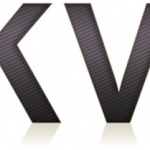This post is also available in: Italian
Reading Time: 3 minutesIn the server virtualization area the main type 1 (or bare-metal) hypervisors are: VMware ESXi, Microsoft Hyper-V, Xen and KVM. For the public cloud IaaS solutions the most used are Xen (AWS use a custom version) and Hyper-V (in Azure). For the on-prem infrastructure, ESXi is the most used, followed by Hyper-V and KVM.
Both Xen and KVM are just a family, because each Linux distribution have it’s own version those hypervisors. If we speak about XenServer we are looking at the Citrix version of Xen (Citrix has bought the commercial version of Xen several years ago), or if we speak about RHEV we are considerin the RedHat implementation of KVM (RedHat was one the first to push on KVM as a possible shift from Xen).

On KVM several product has been developed, like Nutanix AHV or Scale Computing both with an hyper-converged approach with a custom KVM as the virtualization layer.
Now Amazon AWS has announced to adopt a home-brewed KVM as new hypervisor for the public cloud offer, that will replace Xen hypervisor on which it has relied for years. That’s relevant news, because AWS has long-championed the Xen hypervisor. The Xen Project has drawn strength from the fact the mightiest public cloud uses its open-source wares. Citrix makes much of its Xen Server running a close cousin of AWS’s hypervisor.
The new hypervisor was unveiled as a virtual footnote in news of new EC2 instance type called the “C5” powered by Intel’s Skylake Xeons. AWS’s FAQ about the new instances notes “C5 instances use a new EC2 hypervisor that is based on core KVM technology.”
Intel and AWS both say this is a custom 3.0 GHz Xeon Platinum 8000-series processor. Chipzilla has offered a few press-release-grade details of the CPU, saying it worked with AWS on “optimized AI/deep learning engines with the latest version of the Intel Math Kernel Library” and that “MXNet and other deep learning frameworks are highly optimized to run on Amazon EC2 C5 instances.”
It’s a clear success of KVM that it’s finally mature not only for the enterprises but also for the big cloud provider. And will be interesting see if this new trend will bring more benefit for KVM. Not only at the visibility level, but also to fill some technical gaps that already exists.
First the lack of a easy management layer: each product and solutions has it’s own “vCenter”, like for example Prism for Nutanix. But are just vertical solutions. There are some general solutions, like Proxmox but it’s mainly focused for SMB only and does not support deployment into the “classic” (non-HCI) infrastructures. Of course there is OpenStack, but for the mid-sized business it’s something too complex.
The other limit is the compatibility and interoperability: too much dialects of KVM without a simple and common tool for VM migration, not only for P2V, but for V2V across different products and hypervisors. Also it means limited native support for data protection, business continuity and other availability products.




